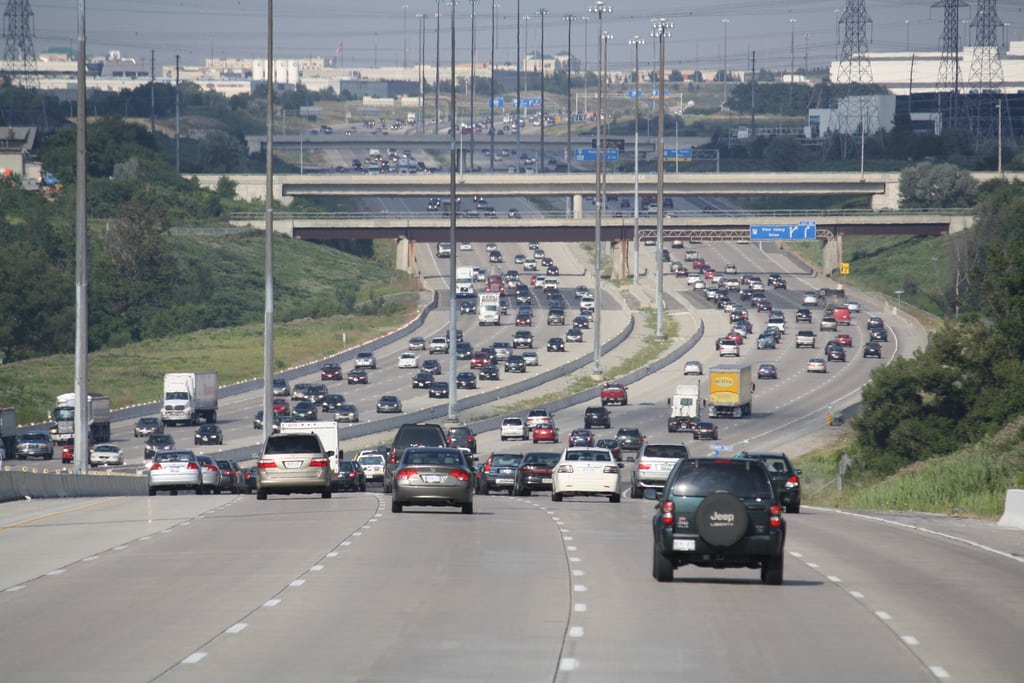Skift Take
Message boards and monitoring systems might help reduce collisions and make drivers more aware, but the only way to really fix a traffic problem is to increase infrastructure for public transportation.
About 58,500 vehicles drive daily along State Road 686, one of Pinellas County’s most congested east-west routes.
Relief for frustrated motorists could come as soon as early as 2014, when the road will be linked to the county’s Intelligent Transportation System, or ITS, which traffic planners say will mean less time idling at red lights and fewer accidents.
County commissioners this week approved a $1.7 million construction project to install five electronic message boards, 18 closed-circuit TV cameras and traffic sensors on the road that is called Roosevelt Boulevard, East Bay Drive and West Bay Drive as it runs from Largo to the Gateway area. Including fiber-optic cabling for cameras, the project will cost about $3 million.
The message boards can warn motorists of accidents or delays ahead. The sensors measure traffic volume, allowing a computer system to adjust how long stoplights remain on red at major intersections.
“It minimizes the delay all vehicles get at the intersection,” said Ken Jacobs, a traffic signal operations manager with the county.
The project is the next step in an $80 million initiative to expand the traffic system to all the county’s major roads. More than half of that money is coming from state and federal grants, and the rest from a 1 cent gas tax.
By 2018, the county’s network will include 66th Street, Park Boulevard, Bryan Dairy Road and Starkey Road.
The traffic control system already operates on parts of U.S. 19, McMullen Booth Road, State Road 60, Belcher Road and State Road 580 in Dunedin.
The system’s 22 message boards and 92 cameras control more than 140 intersections, about half of which have the software that adjusts how frequently stoplights cycle.
When traffic backs up during peak periods, traffic signals on the main through-road stay longer on green. The signals cycle more quickly during off-peak hours.
On S.R. 580, the software reduced stops at red lights by 37 percent.
“The studies we did show it averages about a seven to 10 percent reduction in travel time for everyone,” Jacobs said.
Images of traffic flow from the CCTV cameras are monitored from 6 a.m. to 7 p.m. in the county’s public works building in Clearwater.
Workers there update message boards if there are accidents causing delays, giving motorists time to take alternative routes.
Warning drivers about stalled traffic has lowered the number of rear-end accidents by about 40 percent and the number of rear-end accidents with serious injuries by 45 percent over a 12-month period, Jacobs said.
S.R. 686 serves as the main route in and out of Largo, where congestion has recently increased on East Bay and West Bay drives because of construction on Ulmerton Road, said Tom Morrissette, president of the Central Pinellas Chamber of Commerce.
“Any improvement along that corridor would be gratefully appreciated by the public,” he said. “That is a grueling stretch that can take 20 minutes just to go three or four miles.”
![]()
The Daily Newsletter
Our daily coverage of the global travel industry. Written by editors and analysts from across Skift’s brands.
Have a confidential tip for Skift? Get in touch
Photo credit: Moving traffic on Highway 407. Danielle Scott / Flickr
